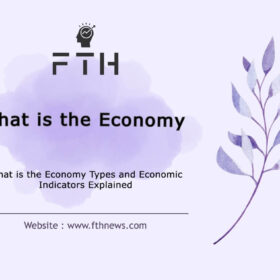
Forecasting: The Art and Science of Prediction
From ancient oracles and soothsayers to modern-day pundits, humanity has forever sought to unveil the mysteries of the future. Yet, throughout history, those who claimed to possess the gift of foresight often proved to be mere charlatans, peddling vague predictions and shying away from accountability. Predictions, both trivial and profound, have the potential to reshape our lives, fortunes, and even our world. In a world saturated with predictions, the pursuit of accuracy in forecasting has never been more critical.
In the realm of financial markets, where fortunes are made and lost, everyone has an opinion about the future. But how can we distinguish between informed foresight and mere conjecture? In this exploration, we delve into “Superforecasting: The Art and Science of Prediction,” co-authored by Philip Tetlock and Dan Gardner, to unearth the keys to making accurate predictions.
The Art of Prediction and the Two Faces of Prophecy:
When it comes to prediction, human nature tends to exhibit two distinct reactions. First, when we are faced with decisions like hiring someone, entering into a business partnership, or embarking on a new venture, we diligently research and scrutinize every detail to gauge the quality of potential outcomes. Only after this thorough examination do we venture into the territory of making predictions about the future.
The second scenario emerges when we must decide the fate of our investments, assets, or personal choices. In such cases, we often turn to fortune-tellers, whose insights, often no better than our own, influence our decisions. The underlying reason for this dichotomy in our approach to prediction lies in our limited understanding of the art and science behind it.
In this blog, we aim to unravel the principles of superforecasting – a method that elevates prediction from guesswork to a systematic, evidence-based practice. Join us in discovering how this intriguing approach can empower you to make more accurate predictions, whether you’re shaping your personal future or navigating the intricate landscapes of the business world.
What is Forecasting?
Forecasting, in essence, is the ability to anticipate future events or outcomes based on present information and understanding. It’s a skill that can be developed through training and practice in various fields. However, it’s important to clarify that developing this skill doesn’t grant you the ability to peer into the distant future like mythical seers and predict it with unwavering certainty.
In fact, there exists an intriguing inverse relationship between the accuracy of predictions and the time horizon considered. The further you attempt to predict into the future, such as three or ten years ahead, the less accurate and more akin to guesswork it becomes. It transforms into a kind of random phenomenon as it moves away from the present.
Consequently, it’s vital to recognize the point at which your predictions shift from being grounded in empirical knowledge to mere speculation. Even the most accomplished economists, brilliant thinkers, and renowned experts cannot foretell their own futures, let alone those of others. So, it’s prudent to approach grandiose predictions with skepticism, especially when they’re proclaimed with unwavering certainty.
This discernment is your safeguard against unfounded assertions, enabling you to make informed decisions for your financial and personal future.
Why Most Predictions Shouldn’t Be Trusted?
Let’s scrutinize the process of observation, review, and mental analysis in simple language. When we consider a topic, for example, we ask ourselves a question, and our mind goes through this process with its two systems.
The first system, with the help of external observations, in the shortest possible time – usually a few seconds – issues a verdict for that event and very urgently leads you to an action.
With the help of this quick and superficial process, this system makes us save our lives from dangers; for example, when a car comes towards us at high speed, in a fraction of a second, our brain tries to find a way to escape from this fast, dangerous object.
Because of this, we react quickly in such situations without thinking. The second system is responsible for the more difficult and expensive work – of course, the cost here means energy consumption – and it is the analysis, analysis, and detailed examination of the topic we are facing.
If the question we are faced with is not something new, it will pass from the first part of our mind and go to the second part. It is in this section that it is put under the microscope of logic and tries its best to deliver a scrutinized result to us. So, if we want to make a simple conclusion about the first and second systems, something like this comes out of the water:
The first system faces a question: Is this a new topic?
If it’s new, it provides a quick answer.
If not, it moves to the second step because it has already addressed this topic.
Next, please!
The second system receives the answer from the first system:
Has this topic been reviewed before? If it has, then it should be examined more thoroughly.
If not, it should be re-evaluated.
Why Our Mind Evolved to Work Efficiently
The human mind has evolved to be a remarkable decision-making machine, and it has systematized itself to do so. Two primary factors underpin this evolution: time and energy. Most decisions, especially those that impact our safety or the things we hold dear, demand swift action.
In situations where our lives are potentially at risk, our minds cannot afford to engage in prolonged analysis, sift through evidence, or ponder deeply. For instance, when an object hurtles toward us, our minds instinctively guide us to react promptly – to shield ourselves or evade danger with practiced agility.
Time is a precious commodity for the first system of our mind. It values the speed of response above all else.
Furthermore, there’s the matter of conserving the body’s energy. Delving into analytical thinking consumes a significant amount of energy. Hence, our minds are compelled to assess whether the situation truly warrants an in-depth investigation, necessitating the expenditure of valuable energy resources.
In essence, our minds have finely tuned themselves to balance the urgency of a situation, the need for rapid responses, and the conservation of energy to ensure our survival and well-being. This strategic allocation of mental resources has been instrumental in the success of our species.
The Mind Systems Behind Prediction & Forecasting
The art of prediction invites us to question which aspect of our mental machinery is at play. It leads us to a fascinating revelation: most predictions about the future stem from our first mental system. When faced with a prediction, our mind quickly assesses if it appears plausible or not.
If our internal response leans toward affirmation, we readily accept it as valid. Conversely, if we sense a negative response, we might classify it as dubious or even perilous, often without delving into further inquiry. It’s a swift process.
What’s even more intriguing is that our minds often embark on crafting imaginative narratives to bolster this initial assessment, bridging any gaps in evidence and support for our conclusions.
The Double-Edged Words of Fortune Tellers
Fortune tellers, much like storytellers of the unknown, captivate people’s imaginations and wallets. People willingly invest in the hope of peering through the enigmatic door of the future, yearning for firsthand tidbits. Not even the prestigious halls of the White House remain immune to this phenomenon.
As a result, fortune tellers have mastered the art of prediction to maintain their invaluable allure. To achieve this, they’ve become adept at using language that leaves room for interpretation and ensures their words can fit a variety of scenarios.
They favor phrases such as:
- “most probably”
- “A considerable amount”
- “In the near future”
- “80 or 90 percent of the time”
Questions regarding specifics like “how much,” “when,” “to what extent,” and “how” are typically overlooked. If someone ever does inquire about such details, a skilled fortune teller might respond with, “No one knows exactly, but…” before guiding the conversation back to one of those ambiguous expressions. Alternatively, they might reassure you by saying, “You fall within at least the 80% majority.
How to Make Predictions
One of the practical approaches to becoming a proficient predictor – even if it’s just for your personal benefit – involves a simple yet effective strategy: seeking knowledge, putting that knowledge to the test, and then sharing your insights.
Many failed predictors, whose names are etched in the annals of history, skipped the crucial step of “testing their knowledge.” They acquired information, often from dubious sources, and set forth to make prophecies without verifying its accuracy or relevance.
Not only did these individuals lack verification, but they also encouraged others to embrace their predictions as well.
To truly master the art of prediction, it’s imperative not to passively accept the information that crosses your path as truth. Instead, you should adopt a stance of healthy skepticism, continuously questioning and scrutinizing what you encounter. This way, you can effectively differentiate between fact and fiction, right and wrong, and friend and foe.
Furthermore, when you embark on predicting a particular topic or event, it’s beneficial to dissect it into smaller, more manageable questions. This approach clarifies the areas in which you need to gather information and enhances the credibility of your predictive skills.
By following these steps and refining your predictive process, you can enhance your forecasting abilities and make more accurate assessments of future events.
Becoming a Forecaster: It’s Not Rocket Science
There’s a common misconception that prediction is a realm reserved for the intellectual elite, geniuses, or those with extraordinary talents. If that were the case, the knowledge of forecasting would remain confined to a privileged few within society. Yet, a quick glance at economic news, political analyses, and other predictions reveals that many forecasters don’t necessarily fit the stereotypical genius profile.
In fact, a scientific study has demonstrated that the disparity in predictive ability between the intellectual elite and the general population is only about 10%. Ultimately, both groups can predict only to a limited extent.
Therefore, the art of prediction leans more on the ability to gather information, analyze it, and extract valuable insights than on innate talent. However, a professional grasp of numbers and data can significantly bolster the credibility of one’s predictions.
The Methods of Prediction Geniuses & Forecasting
Let’s delve into the methods that prediction geniuses employ. The intriguing aspect is that these geniuses often apply similar techniques when navigating uncertainties and challenges. Uniformity in methods doesn’t hinder creativity; it can, in fact, reveal the beauty of diverse solutions. Here are some of their key approaches:
1. Deconstruct the Problem:
Geniuses never attempt to solve the whole puzzle at once. They break it down into manageable components to gain a clearer understanding of each part.
2. Separate the Known from the Unknown:
Geniuses have no qualms about distinguishing what they know from what they don’t. Unlike some who may want to appear all-knowing, geniuses specialize in a few specific areas and segregate what’s outside their knowledge.
3. Pay Meticulous Attention to Details:
Geniuses scrutinize every small and large detail, exploring the relationships between them. This thorough examination allows them to leverage all available resources.
4. Shift Perspectives:
Geniuses often view events from an outsider’s perspective. This change in vantage point grants them fresh insights and deeper mastery of the subject. By distancing themselves from the issue, they discover a different facet of it.
5. Collaborate with Others:
Contrary to the notion of geniuses as solitary figures, they have their own special communities and draw upon the collective mental power when faced with challenges. Only then do they employ the art of prediction to express their views on a particular issue.
6. Embrace Uncertainty:
Rather than making dogmatic predictions, geniuses acknowledge the inherent uncertainty of forecasting. Even when all their analysis points in a certain direction, they present their predictions with an element of possibility. For example, if predicting a football team’s chances of winning, they might say, “There’s a 60% probability that a particular team will win.” This approach allows them to gracefully accept either outcome while keeping the glass half full.
By adopting these methods and fine-tuning your approach to prediction, you can enhance your forecasting abilities and offer more informed insights into future events.
The Habits of Successful Forecasters
1. Staying Informed: While some may view following the news as a futile endeavor, successful forecasters see it differently. They understand that news can be a powerful tool when approached with discernment. Rather than allowing news to sway them in unwanted directions, they critically scrutinize its content, sifting fact from fiction. In this way, these forecasters often possess a deeper understanding than news enthusiasts.
2. Continuous Prediction Refinement: Successful forecasters don’t consider prediction a one-time endeavor. Instead, they regularly update their forecasts, recognizing the dynamic nature of the subjects they predict. This ongoing refinement isn’t a simple task; it requires employing the same method used for the initial forecast.
3. Nourishing the Mind: A fundamental distinction lies between those who seek to nurture their minds and those who relegate their mental capacity to a specific age or era, often their youth. Successful forecasters are perpetual learners. They embrace new knowledge, regardless of whether they had prior familiarity with the subject. This open-minded approach allows them to enrich their mental landscape continuously.
4. Embracing Humility: Excessive pride is a detriment to all minds, even those dedicated to prediction. Believing oneself to be flawless and all-knowing creates a barrier between the forecaster and their potential for growth. To become a proficient forecaster, one must acknowledge that they are prone to errors in judgment, just like anyone else—perhaps even more so. Humility enables forecasters to confront their mistakes, collect valuable data, and learn from their errors. On the other hand, if pride remains unchecked, they are more likely to avoid acknowledging their mistakes, hindering their progress as forecasters.
By incorporating these habits into your approach to forecasting, you can become a more successful predictor, continuously improving your ability to make accurate forecasts.
Successful Forecasters Seek Knowledge Beyond Books
Forecasting is intricately tied to knowledge. However, acquiring that knowledge doesn’t solely involve delving into books, websites, or news networks.
Some of the most valuable information can only be acquired through personal experience. It’s akin to attempting to learn how to skate for the first time.
Before you step onto the rink, you might gather information about the history of skating, the intricacies of skate construction, various skating techniques, and more. You might even attend prestigious skating competitions, closely observing the experts in action. However, it’s only when you lace up the skates and take your first tentative strides that you gain insight into your skating ability and whether you have a shot at making your hometown skating team. To master the art of prediction, you must predict.
The Secrets of Forecasting: People or Practices?
When it comes to forecasters who confidently predict future events using the art of prediction, the question arises: what is the real key to their success in the world of prophecy?
How do they foresee economic downturns or anticipate political reactions of leaders they’ve never met, and, somewhat ironically, witness their predictions come to fruition? Perhaps it can be said that, in addition to intelligence—though only to a certain extent—there’s another vital element at play.
Their primary secret is that, rather than focusing solely on their innate abilities, they dedicate all their efforts to mastering the art of prediction. They immerse themselves in research, deep thought, questioning, self-scrutiny, exploration of differences and similarities, and the continuous pursuit of new perspectives.














